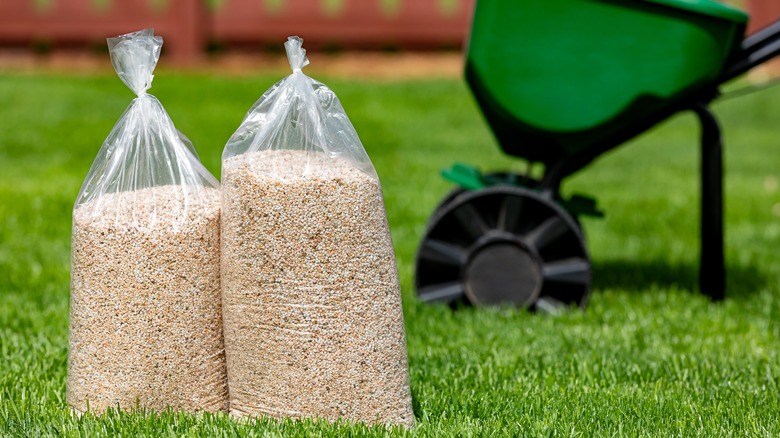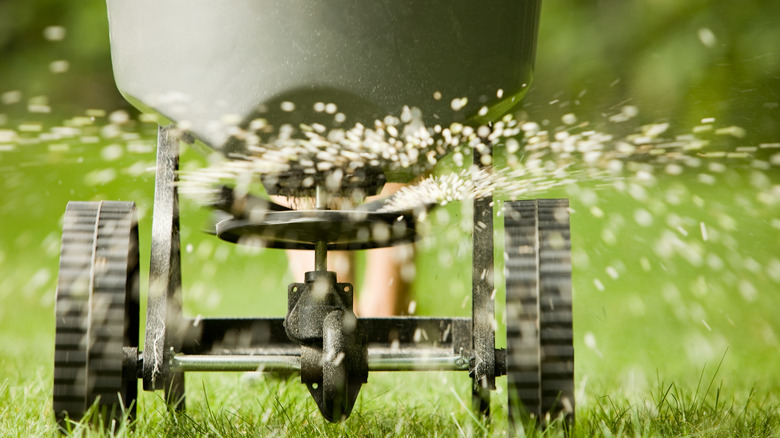How To Fertilize Your Lawn In The Fall For Optimal Results (& Mistakes To Avoid)
For those who live in areas with cool-season grasses, such as fescues, perennial ryegrass, and Kentucky bluegrass, fall is often the best time to fertilize your lawn. While warm-season grasses like zoysia and St. Augustine grasses don't need added nutrients at this time of year, cool-season varieties could use some help preparing for winter. During autumn, these grasses' roots grow deeper into the soil to protect them once harsh winter weather arrives, and providing fertilizer at this time is a great way to keep your grass healthy throughout the year.
Depending on the temperatures in your area, you'll need to fertilize your yard at different times from September through November. Late in the season can be a good time for many, but applying fertilizer after the first frost is a mistake to avoid when maintaining your yard in the fall. Once the ground has begun to harden with the cold weather, your grass will slow down its growth and won't be able to absorb the nutrients you've provided. If you've already missed the fertilization window and soil temperatures are at or below 40 degrees Fahrenheit, it's best to skip your fertilizer application. By avoiding fertilizer mistakes and providing your cool-season grass with nutrients, you can ensure your lawn grows solid roots to survive the winter.
Tips for fertilizing your lawn in the fall
When making your fall application, nitrogen is an ingredient to ensure you include when fertilizing your lawn. This will aid your grass in storing nutrients, becoming denser, and growing its roots. It's best to apply your fall fertilizer about a day after a good rain to ensure the soil is moist and capable of soaking in the plant food. On the other hand, fertilizing when it's forecasted to rain in the next day or two is a mistake to avoid (unless it's just a drizzle). Heavy rain soon after an application can wash the fertilizer away, preventing your turf from reaping the benefits. Additionally, not raking up the leaves on your lawn or leaving debris is another mistake, as this could also block the fertilizer from reaching the roots of your lawn — don't forget to mow beforehand.
Before giving your grass food, it's a good idea to test the soil and see what nutrients your specific grass type lacks. When spreading your fertilizer, be sure to keep it only on the grass and clean up any that might spill onto your sidewalk or driveway. This will help prevent excess fertilizer from ending up in nearby natural waterways. By following these fall fertilization tips and avoiding the big mistakes, you can help your grass look its best when spring rolls around next year.

